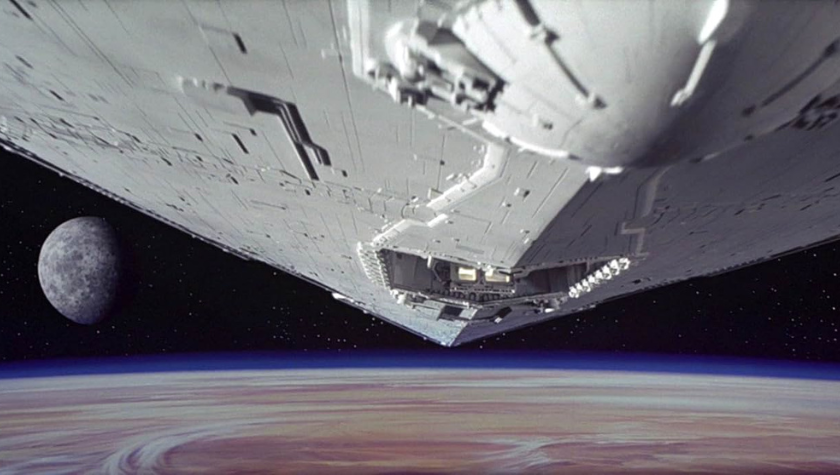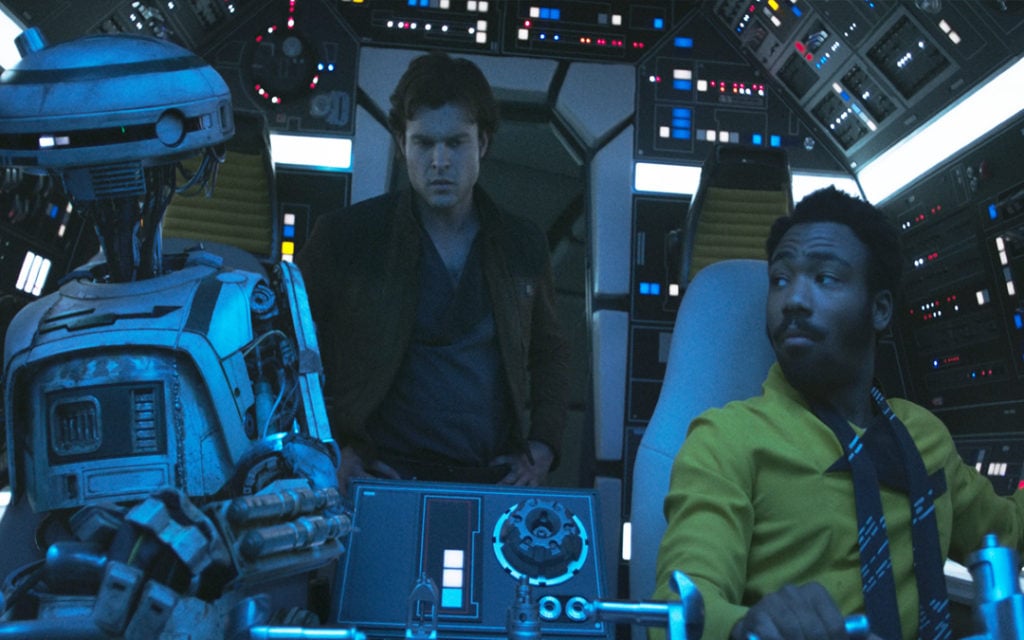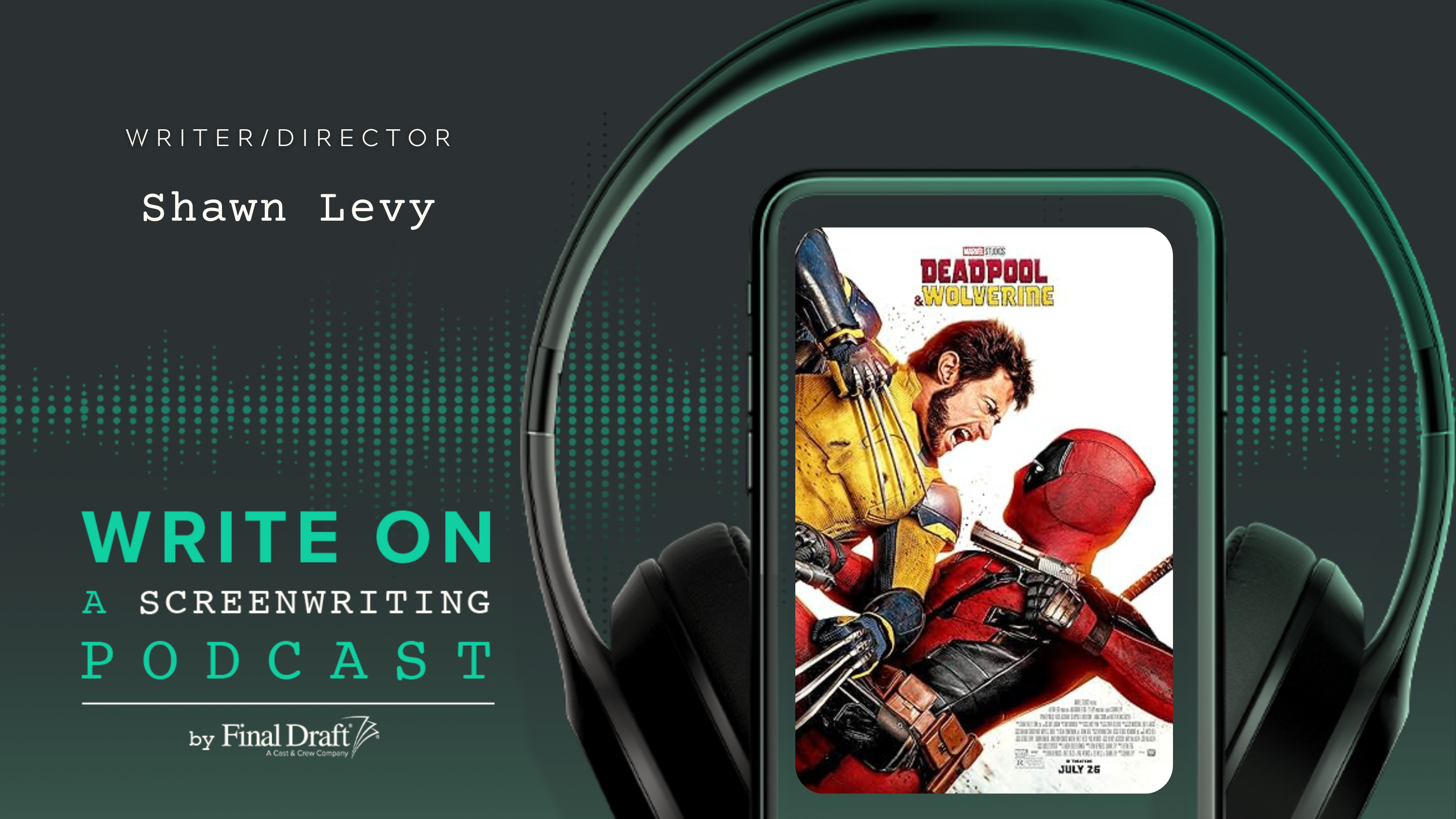All the Write Moves: "Deadpool 2"
June 1, 2018
The makers of Deadpool (2016) endeared themselves to the screenwriting community with a gag in the film’s opening credits, referring to scribes Rhett Reese and Paul Wernick as “the real heroes here.” Yet in the opening credits of Deadpool 2, those same writers — alongside star Ryan Reynolds, who contributed to the sequel’s script — are labeled “the real villains.”
Superficially, the description points to a consequential event that occurs before the credits. Substantively, the “villains” gag speaks to something important about crafting sequels — and about crafting stories in general.
Based on a Marvel Comics character closely associated with the X-Men, the first Deadpool movie introduced Wade Wilson (Reynolds), a sarcastic soldier-turned-assassin with the mutant power to heal from any injury, even a fatal one. He falls in love with Vanessa (Morena Baccarin), learning to become a (somewhat) better person while fighting crime alongside second-string X-Men Colossus (a CGI character voiced by Stefan Kapicic) and Negasonic Teenage Warhead (Brianna Hildebrand).
Caution: Spoilers ahead.
Since watching a happily domesticated Deadpool would have been dull, the sequel inflicts upon Wade an injury from which he cannot recover, because it’s emotional — a bad guy kills Vanessa. This sends Wade into a deep depression (hence the “villains” joke, as if the film’s writers are sadists who dig punishing their protagonist). Not only is that true of the writers, but the same can be said of any responsible dramatist. Facing a character with a challenge that he or she can easily overcome leads nowhere. Facing a character with a challenge that seems impossible to overcome leads everywhere.
Which brings this conversation to how Deadpool 2 functions on a structural level. More specifically, seeing as how Deadpool 2 expands the franchise’s cast by introducing the superhero team X-Force, how do Reese, Wernick and Reynolds prevent new characters from overcrowding the storyline, a problem that has bedeviled previous X-films?
Know your brand
Every big-budget movie is a delivery device for something, whether it’s action or jokes or spectacle or, as in the case of Deadpool 2, all of the above. With guidance from Reynolds, who spent years pushing for a Deadpool movie because he recognized an opportunity to channel his affable snarkiness, the writers understood how to build the right introductory vehicle for Deadpool, and they understood which elements of the first film connected with audiences.
Deadpool 2 features every major component from Deadpool, including filthy language, graphic violence and inappropriate jokes, many of which come at the expense of superhero movies generally and X-Men movies specifically. Takeaway: Keep the customer satisfied.
Construct a strong “A” story
The worst sequels feel like unnecessary fourth acts, because they reduce the force of story threads that were already resolved. The best sequels, such as The Godfather: Part II (1974) and Aliens (1986), deepen the emotional journeys of protagonists. Deadpool 2 follows the example of the best sequels. Killing Vanessa doesn’t reset Wade to who he was at the beginning of the first movie — it asks what happens when the man who was transformed by his romance with Vanessa is tested by her loss. Takeaway: Loss reveals character.
Old business first
Before Deadpool 2 introduces its principal antagonist, time-traveling warrior Cable (Josh Brolin), the movie re-introduces every major returning character from Deadpool. This grounds the new story in a preexisting landscape. Starting a sequel with new characters can sometimes lead to confusion, whereas the method used here reaffirms viewers’ emotional connections with supporting characters, which deepens the audience’s bond with the protagonist. Takeaway: Set the table before serving the meal.
Lead with theme
In promotional interviews, Reynolds described Deadpool as a love story and Deadpool 2 as a family film. To some degree, he’s being sarcastic, as if a movie with jokes about butt plugs could ever be a “family film.” Yet, the theme of family is layered completely (and overtly) in Deadpool 2. Better still, the theme services the “A” story; if Deadpool was about Wade learning to love one person, Deadpool 2 is about him learning to love a community of people. Takeaway: Theme provides unity.
Thin the herd
The most problematically overcrowded superhero movies introduce new characters without giving them anything to do. Remember poor Olivia Munn as Psylocke, standing motionless and silent throughout most of X-Men: Apocalypse (2016)? Deadpool 2 discards characters lacking thematic relevance — without giving away too much, some members of X-Force aren’t as prominent in the storyline as trailers might suggest, even though Deadpool 2 is a setup for the impending X-Force standalone movie. Takeaway: When writing ensemble pictures, make sure everyone matters.
Keep subplots to a minimum
This might be the smartest move that Reese, Wernick and Reynolds made, because the usual approach to sequels is to assume that bigger equals better.
Although Deadpool 2 cost about twice as much to make as the first film, it’s only 11 minutes longer. The extra money paid for whiz-bang action scenes and more elaborate CGI, rather than extraneous sequences. (Presumably, some of that extra money also went toward big paychecks for Brolin and Reynolds). Instead of giving every supporting character flashbacks and showcase scenes, the writers of Deadpool 2 reserved that for Cable; whom the writers present as conflicted and dimensional, thus making him a suitable opposite for Deadpool. Takeaway: Resist sprawl.
As with any big movie, there are complaints to be made about Deadpool 2, not least of which is the basic problem of sequelitis. Introducing new characters, no matter how imaginatively the process is handled, doesn’t mitigate the innate been-there/done-that quandary.
Nonetheless, in a cinematic world that regards sequels to successful films as inevitable, it’s worth examining what makes some follow-up movies more satisfying than others. The writers of Deadpool 2 deserve credit for the bold move of killing Vanessa, which gives the sequel an emotional framework it wouldn’t otherwise have, and they deserve credit for crowd control. Embedded within the writing of Deadpool 2 are lessons applicable to nearly any type of film — even those without jokes about butt plugs.
Written by: Peter Hanson
Peter Hanson is a Los Angeles-based writer, filmmaker and teacher. He directed the screenwriting documentary Tales from the Script, and he teaches at Pepperdine University and UCLA Extension. He provides script consulting at www.GrandRiverFilms.com.



